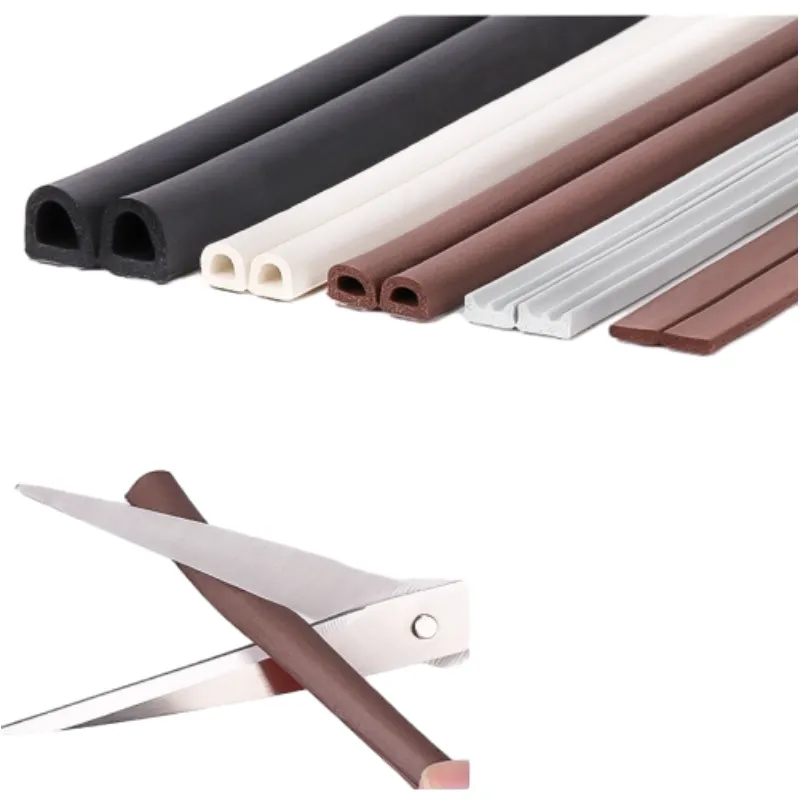rubber d seal
Understanding Rubber D Seals A Comprehensive Overview
Rubber D seals, often referred to as rubber D-rings or foam seals, are essential components in various industrial and commercial applications. Known for their unique shape and versatility, these seals play a crucial role in providing effective sealing solutions across different sectors, including automotive, construction, and manufacturing. This article will delve into the characteristics, applications, and benefits of rubber D seals, highlighting why they are indispensable in many engineering designs.
What Are Rubber D Seals?
Rubber D seals are named for their distinctive D shape, which resembles the letter when viewed in cross-section. This design typically features a flat surface on one side and a rounded edge on the other. The flat side aids in easy installation, allowing the seal to be pressed against a surface to create a tight seal, while the rounded edge provides flexibility and better compression, ensuring a snug fit.
These seals are primarily made from various types of rubber materials, including EPDM (Ethylene Propylene Diene Monomer), neoprene, and silicone. Each type of rubber offers unique properties, such as resistance to extreme temperatures, UV exposure, and chemicals, making rubber D seals suitable for a wide range of environments and applications.
Applications of Rubber D Seals
Rubber D seals are widely used across numerous industries due to their adaptability. Here are some common applications
1. Automotive Industry In vehicles, rubber D seals are utilized in doors, windows, and trunk lids to prevent water and air leakage. They contribute to soundproofing and climate control, enhancing passenger comfort.
2. Construction In the construction sector, these seals are employed in windows, doors, and roofing systems. They create airtight barriers that help improve energy efficiency and prevent drafts, ultimately reducing heating and cooling costs.
3. Manufacturing Rubber D seals are integral in machinery and equipment where components need to be secured and insulated to prevent contamination and loss of efficiency. They are often used in gaskets and offer protection against dust, debris, and moisture.
rubber d seal

4. Household Applications Common household items like refrigerators, washing machines, and air conditioning units often feature rubber D seals to maintain insulation and energy efficiency.
Benefits of Rubber D Seals
Rubber D seals provide a multitude of benefits that make them a preferred choice in sealing applications
- Versatility Their unique shape and material properties allow for a wide range of uses, making them suitable for many types of installations and requirements.
- Durability Rubber D seals are designed to withstand harsh environmental conditions, including extreme temperatures and exposure to chemicals, ensuring a long service life.
- Ease of Installation The simple design allows for easy installation, often requiring minimal tools and effort, which saves time and labor costs.
- Effective Sealing Due to their flexibility and compressibility, rubber D seals create a tight, reliable seal that prevents leaks and maintains the integrity of the joined surfaces.
- Cost-Effectiveness With their longevity and effectiveness, rubber D seals can be a cost-effective solution over time, reducing the need for frequent replacements or repairs.
Conclusion
In conclusion, rubber D seals are vital components in various applications, providing effective sealing solutions that enhance efficiency and performance. Their versatility, durability, and ease of installation make them a favored choice across many industries. As technology advances and industries continue to evolve, the demand for reliable sealing solutions like rubber D seals will remain crucial, ensuring they play an integral role in future innovations. Understanding their characteristics and applications can help businesses leverage the full benefits of these indispensable seals, ultimately contributing to improved product performance and operational success.
-
Under Door Draught Stopper: Essential ProtectionNewsJul.31,2025
-
Garage Door Seal and Weatherstrips for ProtectionNewsJul.31,2025
-
Edge Banding Tape for Perfect EdgesNewsJul.31,2025
-
Table Corner Guards and Wall Corner ProtectorsNewsJul.31,2025
-
Stair Nose Edging Trim and Tile Stair SolutionsNewsJul.31,2025
-
Truck Bed Rubber Mats for Pickup BedsNewsJul.31,2025
-
Window Weather Stripping for Noise ReductionNewsJul.29,2025